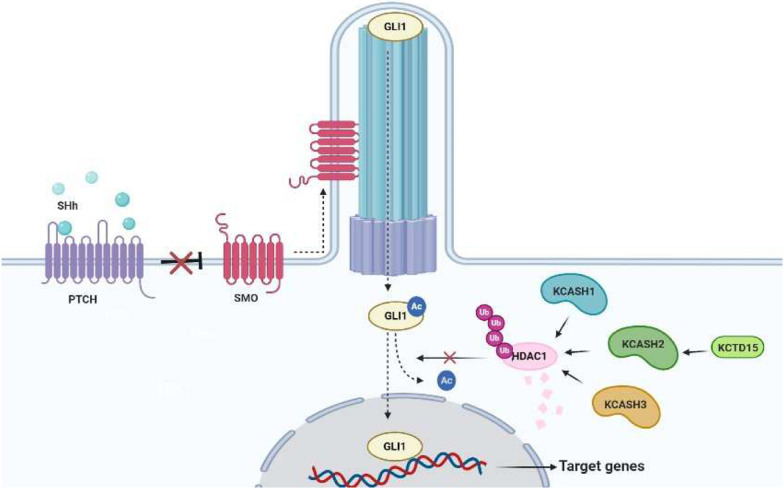Fig. 1.
Group B KCTDs (KCASH family) suppress Hh/Gli1-dependent tumorigenesis. An example of cooperation between KCTD members. The Hh pathway is activated in the presence of SHh ligand, which binding to PTCH abolishes PTCH-mediated SMO inhibition allowing SMO to translocate into the primary cilium. Subsequently, ciliary trafficking of Hh pathway components leads to activation and transport of the transcription factor Gli1 towards the nucleus, where it transcribes target genes involved in proliferation and tumorigenesis. Along the way, Gli1 is kept transcriptionally active by HDAC1 deacetylation. The three members of the KCASH family act as negative regulators, promoting the ubiquitination and proteasomal degradation of HDAC1, thereby inhibiting transcriptional activity of Gli1. In this context, another KCTD protein, KCTD15, positively regulates KCASH2KCTD21 protein levels, enhancing its inhibitory activity. SHh: Sonic Hedgehog. PTCH: Patched

